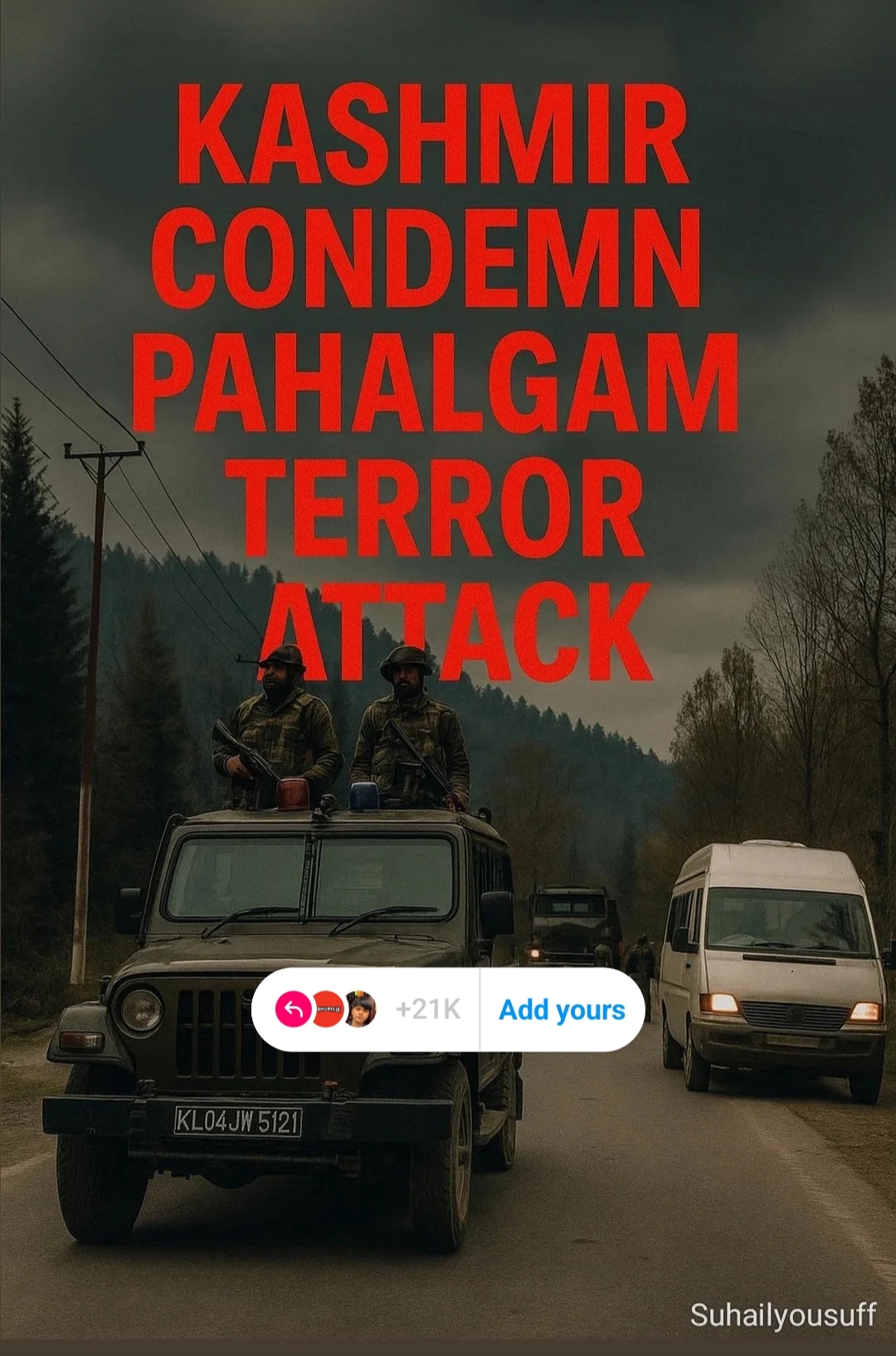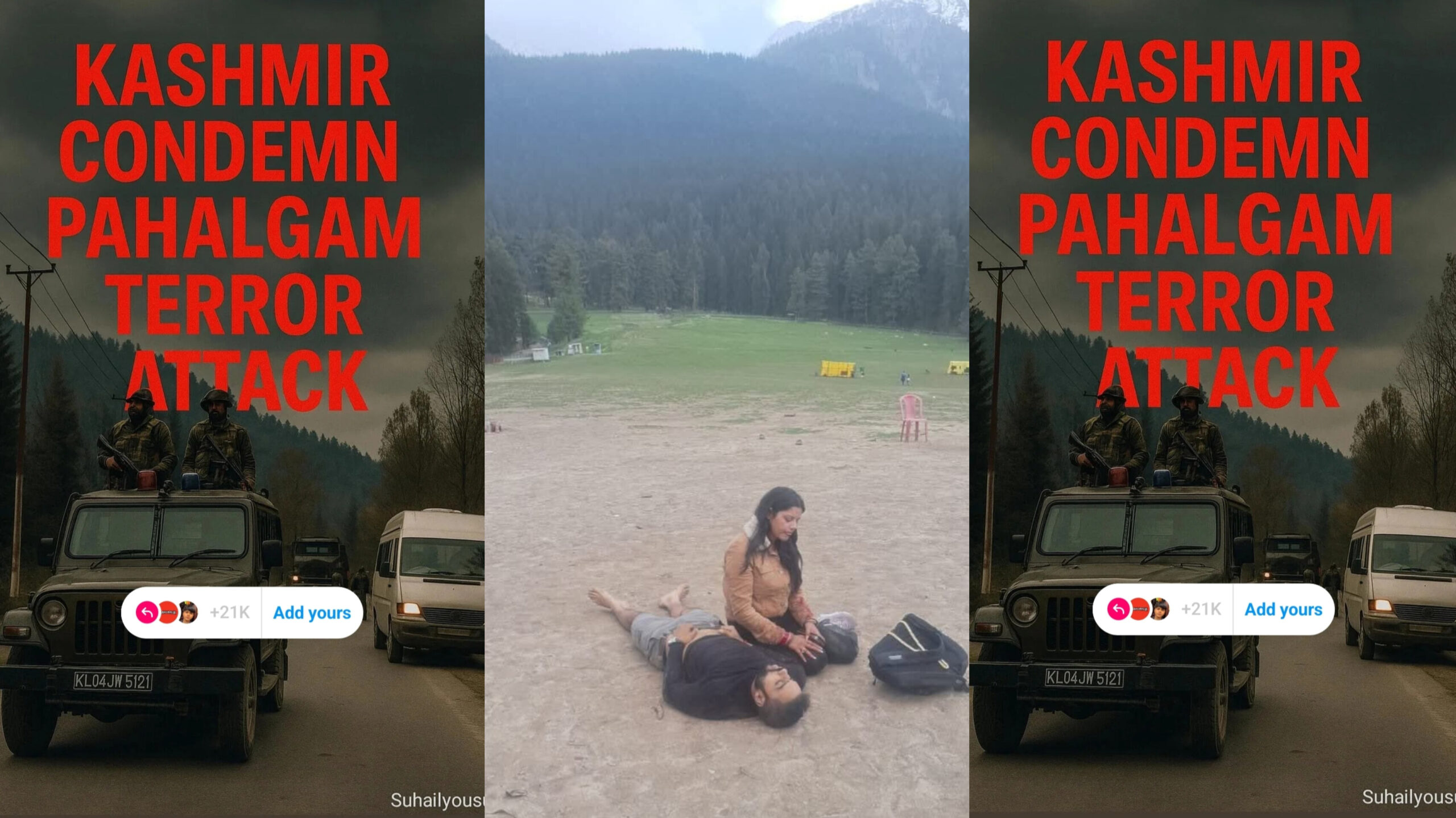In the wake of the heartbreaking terror attack in Pahalgam on April 22, where 25 innocent tourists lost their lives to a brutal assault by unknown gunmen, the people of Kashmir have come together in an unprecedented show of unity and condemnation. The hashtag #KashmirCondemns gained rapid traction across Instagram, with over 22,000 stories shared in less than 24 hours, painting a picture of a region refusing to be associated with violence.
The condemnation wave was sparked by a simple, heartfelt Instagram story shared by local Kashmiri user @suhailyousuff, who posted, #KashmirCondemnsPahalgamAttack .” Within hours, the story resonated with thousands, setting off a digital chain reaction of solidarity. Suhail’s post rapidly went viral, and his message became a rallying cry for peace-loving Kashmiris tired of seeing their homeland’s name linked with bloodshed.

This social media storm marks a turning point in public sentiment in the Valley. From students and influencers to local business owners and public figures, a diverse cross-section of Kashmiri society took to their Instagram stories to denounce the violence. Many of them reshared @suhailyousuf’s story or created their own, with messages like “Not In Our Name,” “Peace for Pahalgam,” and “Tourists are Guests, Not Targets.”
The horror of the attack struck a particularly painful chord. Pahalgam, a beloved tourist destination nestled in the scenic Anantnag district, has long symbolized the serene and hospitable face of Kashmir. The victims of the attack—families and travelers from across India—had come to enjoy the valley’s natural beauty, not to fall victim to terror.
The use of Instagram as a platform for protest and grief underscores the growing role of digital media in shaping narratives in conflict-prone regions. While mainstream media coverage often frames Kashmir through the lens of conflict, the voices emerging from this grassroots movement are offering a more human and empathetic perspective. They reflect a generation that refuses to let its identity be hijacked by violence.
Suhail Yousuf, the man behind the original post, shared in a brief comment, “I never expected this to go viral. I just posted what I felt. As a Kashmiri, I was heartbroken and ashamed that something like this could happen to tourists in our home. I wanted people to know we don’t support this.”
The sheer volume of stories—22,000 and counting—shows that this sentiment is widely shared. In an era where narratives are often shaped by loud extremes, the silent majority of Kashmiris is finding its voice through smartphones and social media, speaking a language of peace and coexistence.
In addition to Instagram, many users took to Facebook, Twitter, and WhatsApp to circulate similar messages. Some even organized candlelight vigils and silent protests in Srinagar and Anantnag, urging authorities to bring the perpetrators to justice and restore a sense of safety to both locals and tourists.
This mass digital condemnation sends a powerful message to the world: the people of Kashmir do not condone violence. They grieve for the victims. They stand for peace. And they want the world to know that the soul of Kashmir is not built on bullets and blood, but on hospitality, resilience, and humanity.

